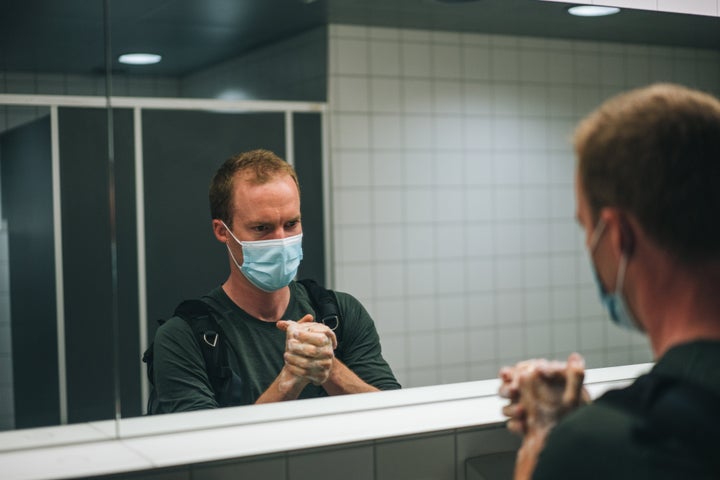No one really enjoys using a public toilet, especially during a global pandemic. However, new research has found the chances of you catching Covid-19 in a public loo are low.
Research led by Professor Sotiris Vardoulakis from the Australian National University found no evidence of airborne transmissions for pathogens such as Covid-19 in public toilets.
The peer-reviewed study, published in the journal Science of Total Environment, looked at 38 studies from 13 countries published from 2000 to 2020 to find out the risk of viral and bacterial transmission from using a public toilet.
The study also analysed various possible transmission modes in public washrooms including inhalation, surface contact and faecal-oral (when the contaminated faeces from an infected person are somehow ingested by another person. Yes, really).
Flushing the toilet and using hand dryers in public toilets can increase some risk of aerosolisation, the authors said. But the chances of transmission were seen as quite low, as long as good hand and bathroom hygiene was maintained.
“We realise people are worried about using public washrooms during the pandemic, but if you minimise your time in the bathroom, wash and dry your hands properly, and don’t use your mobile phone, eat or drink, then bathroom use should remain low risk,” Professor Vardoulakis said in a statement.

Health authorities across Australia have used sewage surveillance testing to see where the virus may be circulating undetected.
The study highlights that Covid patients with or without symptoms seem to shed the virus through their faeces, making it a potential transmission source. Though aerosol particles are now widely considered a known route of Covid-19 transmission, Professor Vardoulakis said that there wasn’t any evidence of that occurring in public toilets in studies published during the first year of the pandemic.
“There are a number of reasons it is low risk in public toilets – people don’t spend a long time in bathrooms and don’t interact with others,” he explained. “Importantly, the aerosols you may inhale when you flush the toilet come from your own human waste. The risk of cross-contamination is not very high.”
In hospitals in Singapore, China, England and Italy, environmental samples from toilets in Covid wards picked up the presence of Sars-CoV-2, the virus that causes the disease.
Professor Vardoulakis, however, pointed out contamination was different from transmission. The study makes 25 recommendations related to public toilet contamination and transmission risks, including electric doors or doorless entryways, closing the toilet lid before flushing and non-touch flush buttons.